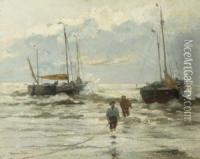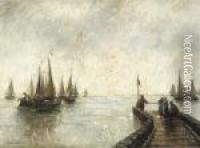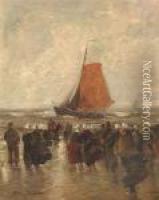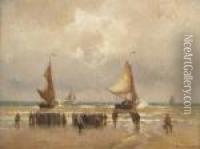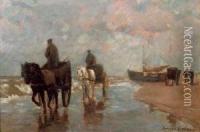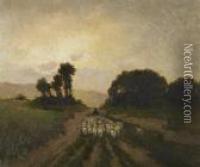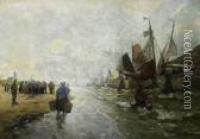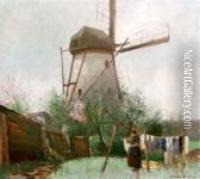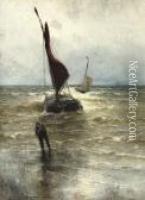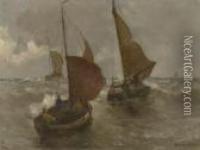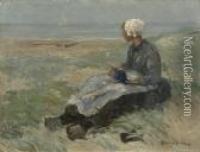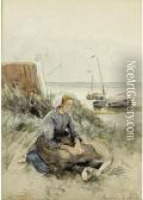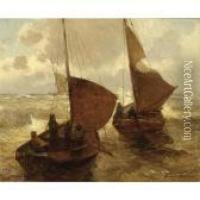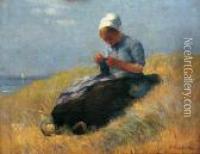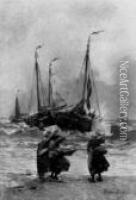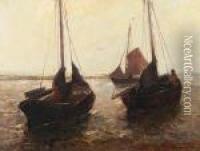German Grobe Paintings
German Grobe was a German painter who specialized in marine art, depicting the life and scenery of fishermen and their environment. Born on September 28, 1857, in Hannover, Germany, Grobe was exposed to the arts at a young age. He initially trained as a lithographer before deciding to pursue a career in painting. He studied at the Düsseldorf Academy of Arts, which was a popular institution among aspiring artists of the time, and where he was influenced by the Düsseldorf school of painting, known for its meticulous detail and emphasis on romantic landscapes and historical subjects.
Grobe traveled extensively along the North Sea coast, where he found his inspiration in the rugged beauty of the sea and the simple lives of the coastal fishermen. His works often featured the harsh daily reality of these communities, with a particular focus on the relationship between the fisherfolk and the unforgiving sea.
Throughout his career, German Grobe exhibited his work in various cities and gained recognition for his unique approach to marine painting. His style combined realistic observation with a certain romantic flair. He captured the luminous quality of light on water and the atmospheric conditions of the sea, which set his work apart from his contemporaries.
Despite being less well-known today, during his lifetime, Grobe's paintings were quite popular, and he enjoyed a successful career. He lived through the turbulent times of World War I and the interwar period, which saw significant changes in art movements and tastes. Nevertheless, Grobe remained committed to his style and subject matter until his death on August 6, 1938, in Düsseldorf. His works continue to be appreciated by those with a love for maritime art and serve as a historical record of the life of North Sea fishermen in the late 19th and early 20th centuries.
